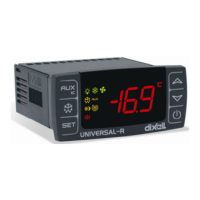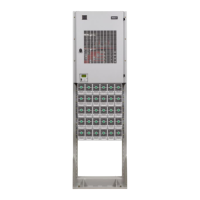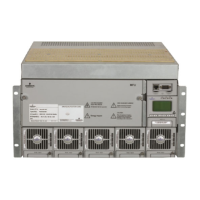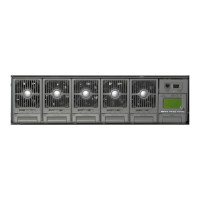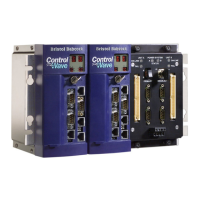24 100-412-183 REV. 13
2.6 Glossary of Terms
The following terminology may be encountered when using or operating a DCX S Power
Supply ultrasonic welding system:
Actuator: The unit which houses the converter/booster/horn stack assembly in a rigid
mounting, allowing the stack to move up and down, either mechanically or pneumatically,
applying force to the part at a user-adjustable force and velocity.
Alarm: Visual indication of error.
Amplitude Control: The ability to set amplitude digitally or by an external control.
Amplitude: The peak-to-peak movement at the horn face. Always expressed as a
percentage of the maximum.
Booster: A one-half-wavelength-long resonant metal section mounted between the
converter and horn, sometimes having a change in cross-sectional area between the input
and output surfaces. The booster mechanically alters the amplitude of vibrations received
from the converter, and imparts the new amplitude to the horn.
Clamping Force: The pounds or kilograms exerted by the horn onto the workpiece.
Converter: The device that converts electrical energy into mechanical vibrations at a high
frequency (an ultrasonic rate).
Counters: A record of the number of cycles, general alarms, power-on hours, etc,
recorded in the power supply.
Degating: Removing a molded part from its runner system.
Energy Director: A triangular-shaped projection of plastic material which concentrates
the ultrasonic energy at the joint interface of a plastic part.
External Amplitude Control: Enables you to access real-time amplitude control directly
via the user I/O connector.
External Frequency Control: Enables you to access real-time frequency offset control
directly via the user I/O connector.
Fixture: A device for holding a part in position for assembly.
Flash: Material displaced from the joint area.
Forming: Reshaping a section of thermoplastic.
Fretting Corrosion: A black surface condition, that results from friction between metal
parts, that appears on the converter-booster-horn stack mating surfaces.
Frequency: The operating frequency of the ultrasonic stack. The frequency stored is
measured at the end of the ultrasonic portion of the cycle (when ultrasonics are
terminated).
Frequency Offset: An offset factor applied to the ultrasonic frequency stored in the
power supply.
Gain: The ratio of output to input amplitude of a horn or booster.
Horn: A bar or metal section, usually one half-wavelength-long which transfers vibratory
energy to the workpiece.
Horn Amplitude: The peak-to-peak displacement of a horn at its work face.
Horn Scan: A scan to enhance selection of operating frequency and control parameters.
Insertion: The process of embedding a metal component in plastic.
Interface: 1. The contact surface of two mating parts. 2. The connection between two
pieces of equipment.
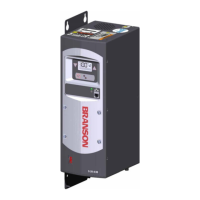
